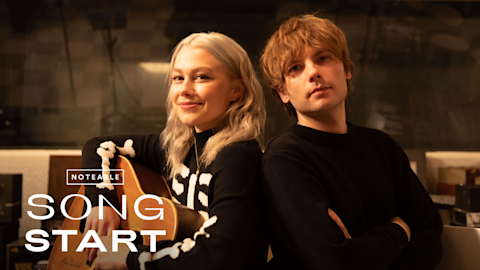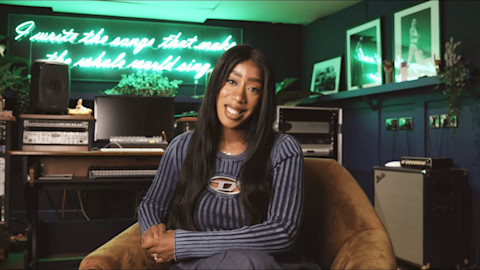In this ongoing series, we take a closer look inside some of the many labels carving their own niche.
Back in 2008, starting a new record label would’ve ranked low on the list of wise business ventures, coming in just above opening a VCR repair shop and investing in phonebook publishing. The advent of mp3s had pushed CD sales off a cliff, and nascent platforms like MySpace and blogs were beginning to give artists the means to promote and distribute their music without the need for middlemen. But from this improbable moment, one of America’s most renowned independent record labels was born. Brooklyn-based imprint Mexican Summer initially built its brand through some impressively prescient A&R investments, releasing landmark early recordings from the likes of Washed Out, Ariel Pink, and Best Coast. And it’s managed to survive for over a decade by constantly adapting—to shifting musical trends, to sea changes in the industry, and to the evolving demographics of its customer base. Here, label cofounders Keith Abrahamsson and Andrés Santo Domingo explain how they did it.
The beginnings
Abrahamsson and Santo Domingo were in a better position than most to launch a new label venture. The two had been running another established imprint, Kemado Records, since 2002. That label had become best known for stoner-rock acts like The Sword and Dungen, but Abrahamsson and Santo Domingo sought another outlet to promote different types of underground music and experiment with different sorts of release strategies.
“We wanted to do things less traditionally in the sense of how contracts worked in the past, where you had to have longer-term commitments to artists,” Santo Domingo says. “We wanted to have more artists with less commitment.” To realize that goal, the fledgling label specialized in limited-production runs in a long-neglected format that was starting to show signs of life again.
“There was a resurgence of vinyl that came on really strong, and we were riding that wave,” Santo Domingo says. “It was the post-Napster era, so people were settling into listening to music digitally, but I also think people got sick of not having any physical product for a sustained amount of time, because CDs were long gone by then, and there was this deep-seated need for something tactile.”
![Mexican Summer's Keith Abrahamsson and Andrés Santo Domingo, Photo by Alex Tults]()
Mexican Summer's Keith Abrahamsson and Andrés Santo Domingo, Photo by Alex Tults
The growing pains
Every startup indie label dreams of getting in on the ground floor with a rising artist that ends up breaking through on a national level. Early on, Mexican Summer was fortunate to have several of them, with buzz-generating records from Washed Out, Real Estate, and Kurt Vile teeing up the label’s first true grand-slam release: Best Coast’s widely acclaimed 2010 debut album, Crazy for You, which ended up selling more than 100,000 copies.
At that point, Mexican Summer could no longer think of itself as a boutique imprint specializing in small vinyl releases; it had to quickly learn how to punch at the weight of the biggest labels in indie rock. It took some time for them to compete at that level, and before long, all of the aforementioned artists moved on to larger labels. “That was our cross to bear at first,” Abrahamsson says. “We were a tiny label, and we didn’t have the leverage or the history to really hold onto these artists. We got burned a bunch of times!”
“A lot of those artists were signed as one-offs,” Santo Domingo adds. “We weren’t thinking beyond that, and they just happened to hit.” Further complicating matters was the fact that, by the early 2010s, vinyl was no longer a micro-niche market catering to the most dedicated music heads. Major labels were getting into the game, and big-box retailers like Urban Outfitters were bringing vinyl to more casual music consumers, resulting in manufacturing bottlenecks at the printing presses that Mexican Summer relied upon.
“We’ve definitely had challenges, and still do,” Santo Domingo says. “Especially in terms of timing. It’s very hard to get something turned around fast. There’s just not enough plants for the amount of vinyl being made. So our releases are planned at least half a year ahead of time.”
The expansion
Being a record label in the ‘10s means being more than just a record label. Mexican Summer’s Brooklyn headquarters includes an adjacent co-op record store (Co-Op 87) and recording studio (Gary’s Electric Studio). Likewise, the label’s in-house operations have proliferated to include a book-publishing arm, a reissue imprint (Anthology Recordings), and an experimental electronic-music offshoot (Software Recording Co.) headed by Daniel Lopatin, a.k.a. Oneohtrix Point Never. But despite their deep roots in their Greenpoint neighborhood, Mexican Summer doesn’t see itself strictly as a Brooklyn entity. With a roster that currently spans New Zealand avant-soul dynamo Connan Mockasin, Welsh art-pop emissary Cate le Bon, and L.A. torch singer Jessica Pratt—not to mention an annual label-curated festival held in the artist oasis of Marfa, Texas—Mexican Summer has cultivated a community in more psychographic than geographic terms.
“I would say in today’s climate, you need to be branched out in all those directions,” Abrahamsson says. “You can’t just put records out. Obviously, that’s our core focus, but having things like publishing, and doing events and the studio and the record store—all of that plays a huge role in establishing our identity.”
“It ties into the evolution of us as people,” Santo Domingo adds. “It ties into our own interests and where we’re going, and the things we like to do. It’s about us going where our audience goes. I think a lot of the people that we sold records to 10 years ago might be interested in buying the books we put out now.”
The future
Both Abrahamsson and Santo Domingo readily admit they’re no longer hitting clubs six nights a week in search of their next signing. (Fatherhood has a way of cramping your style in that regard.) And as their label has become a proper indie institution, they’ve inevitably reined in the freewheeling, anything-goes approach to A&R investing that initially fueled the Mexican Summer enterprise.
“We sign less stuff now,” Abrahamsson says. “It’s way more about relationship-building. Obviously, the music has to turn us on. But once that happens, it’s more of a slow burn and making sure the people fit into the culture and community we’ve created. I think we’ve fine-tuned our approach. When we first started, we kind of hemorrhaged records, and that was super-fun, and pretty liberating.”
“But [it wasn’t] always productive, both financially and creatively,” Santo Domingo adds.
Running a tighter ship means Mexican Summer is in a better position to focus on its most important function these days: guiding its artists through the vast, exceedingly crowded digital-music universe, and ensuring they don’t get lost in the deluge. While technological tools have allowed artists to take more control of their careers than ever before, for Abrahamsson and Santo Domingo, navigating the new paradigm still requires old-school expertise.
“I think there’s a lot of things artists don’t realize labels do,” Santo Domingo says, before going on to explain the laborious process of simply releasing a 12-inch single. And while much of what labels do—in terms of things like marketing, licensing, and publicity—can arguably be handled by a determined and entrepreneurial artist, labels provide unique opportunities to elevate bands and get them in front of the right audiences.
“Labels act as a curatorial voice,” adds Santo Domingo. “You could argue that you don’t really need museums if you could just rent empty halls and put up paintings. But there’s purpose to the museum because there’s a curatorial aspect that gives it a seal of approval.”
—Stuart Berman







